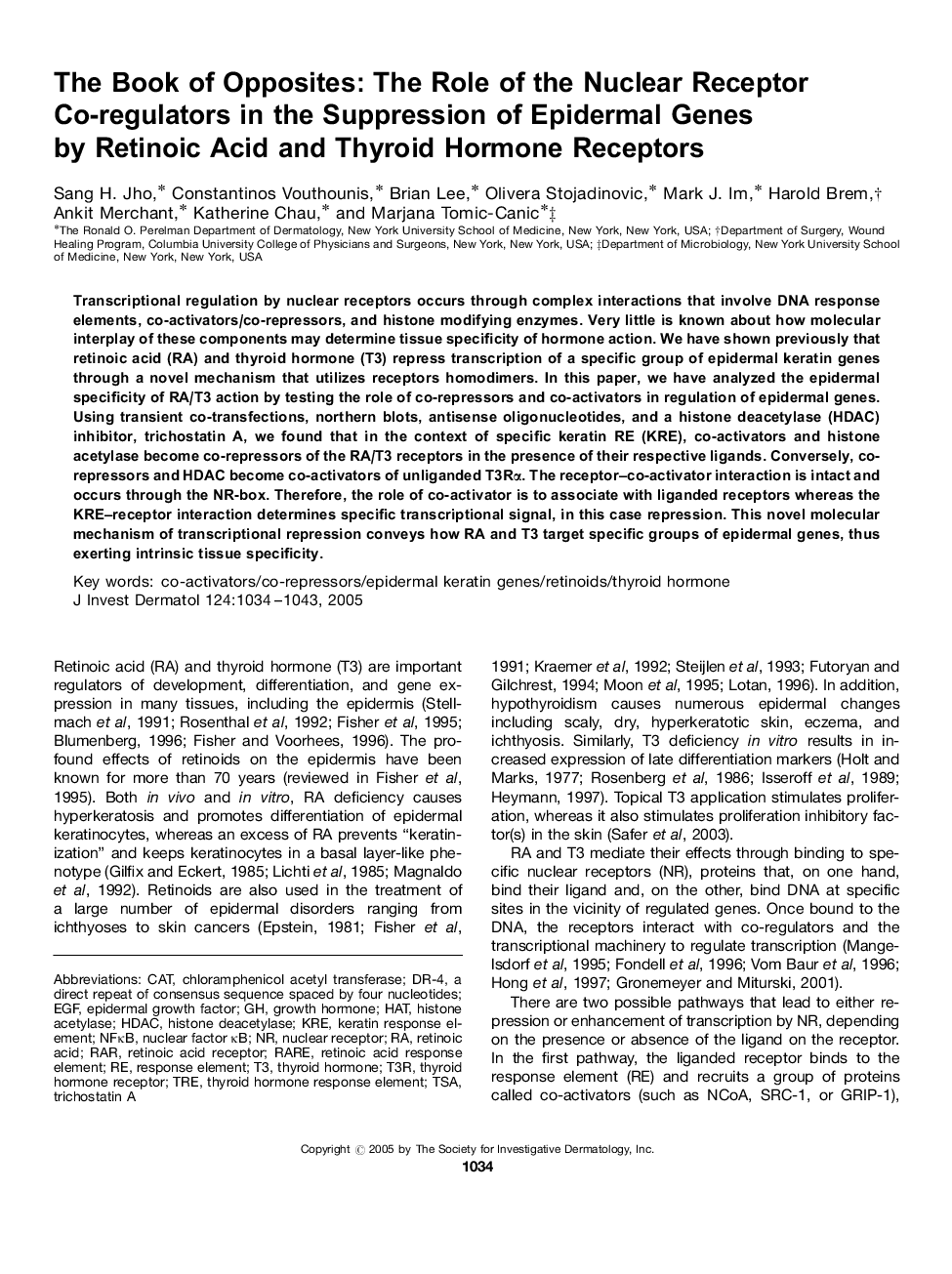| Article ID | Journal | Published Year | Pages | File Type |
|---|---|---|---|---|
| 9231180 | Journal of Investigative Dermatology | 2005 | 10 Pages |
Abstract
Transcriptional regulation by nuclear receptors occurs through complex interactions that involve DNA response elements, co-activators/co-repressors, and histone modifying enzymes. Very little is known about how molecular interplay of these components may determine tissue specificity of hormone action. We have shown previously that retinoic acid (RA) and thyroid hormone (T3) repress transcription of a specific group of epidermal keratin genes through a novel mechanism that utilizes receptors homodimers. In this paper, we have analyzed the epidermal specificity of RA/T3 action by testing the role of co-repressors and co-activators in regulation of epidermal genes. Using transient co-transfections, northern blots, antisense oligonucleotides, and a histone deacetylase (HDAC) inhibitor, trichostatin A, we found that in the context of specific keratin RE (KRE), co-activators and histone acetylase become co-repressors of the RA/T3 receptors in the presence of their respective ligands. Conversely, co-repressors and HDAC become co-activators of unliganded T3Rα. The receptor-co-activator interaction is intact and occurs through the NR-box. Therefore, the role of co-activator is to associate with liganded receptors whereas the KRE-receptor interaction determines specific transcriptional signal, in this case repression. This novel molecular mechanism of transcriptional repression conveys how RA and T3 target specific groups of epidermal genes, thus exerting intrinsic tissue specificity.
Related Topics
Health Sciences
Medicine and Dentistry
Dermatology
Authors
Sang H. Jho, Constantinos Vouthounis, Brian Lee, Olivera Stojadinovic, Mark J. Im, Harold Brem, Ankit Merchant, Katherine Chau, Marjana Tomic-Canic,
